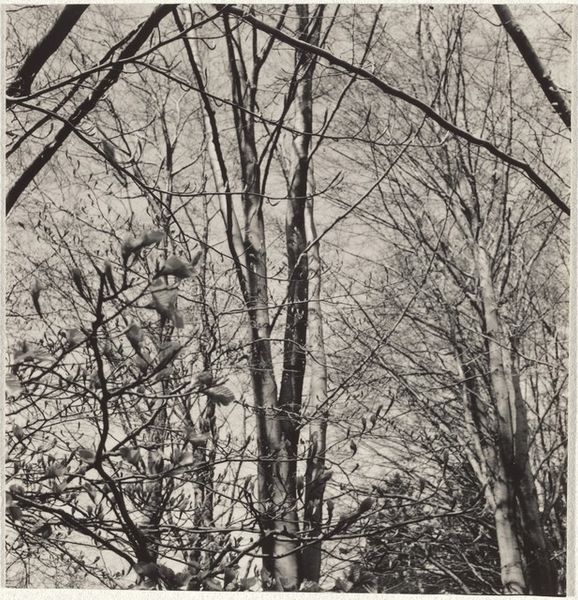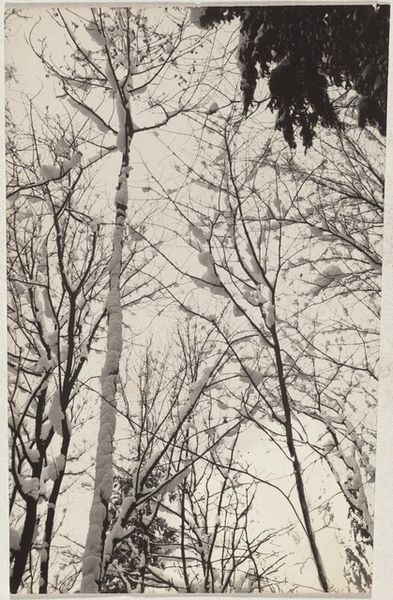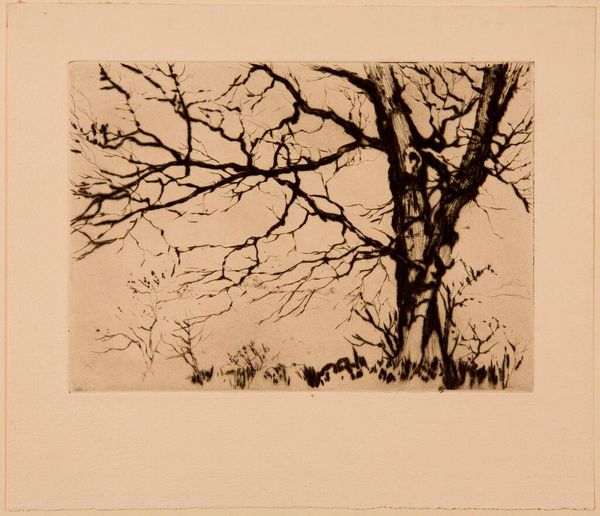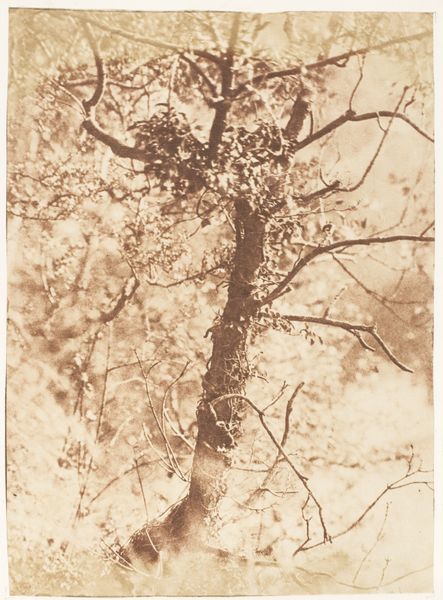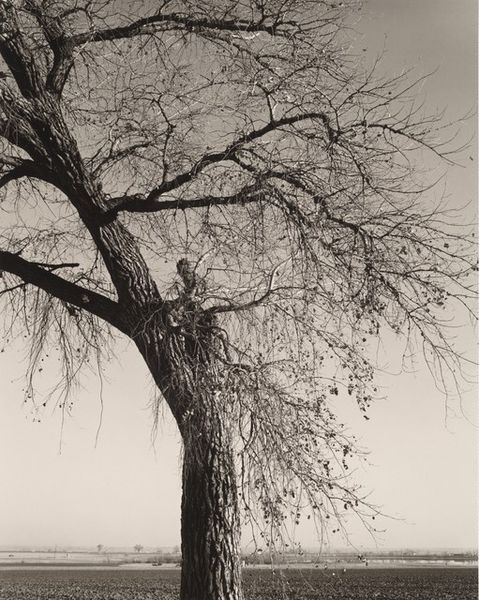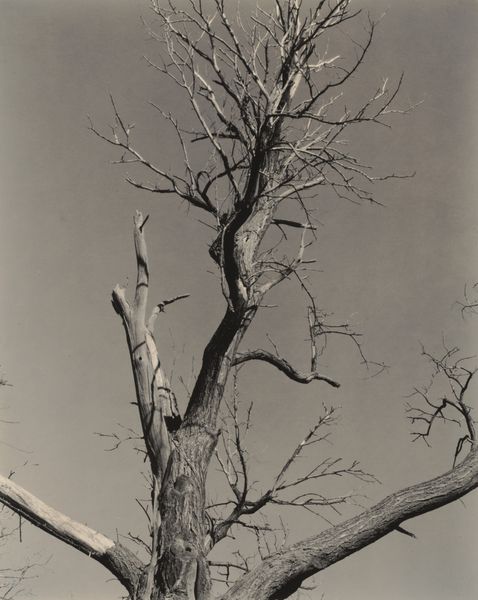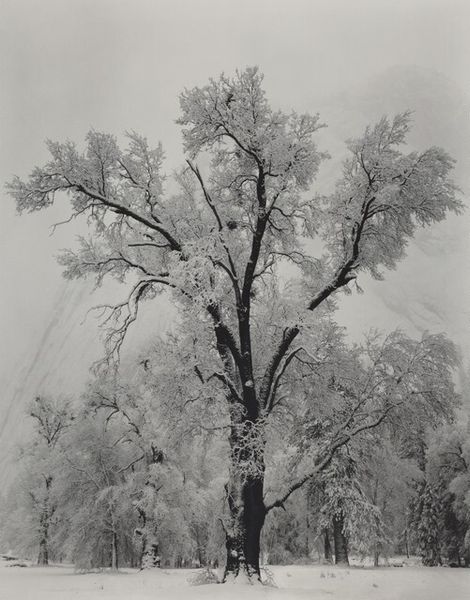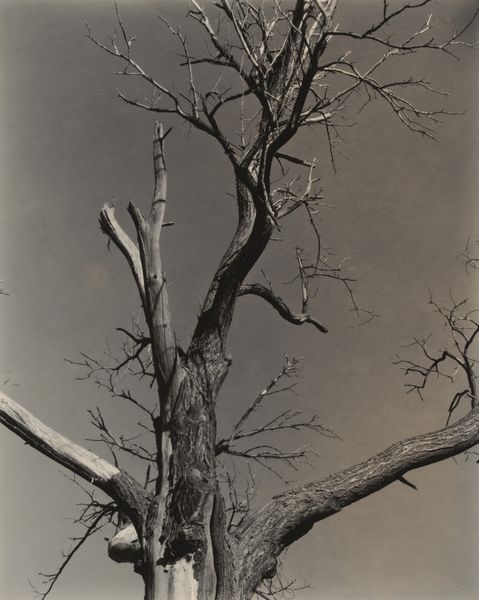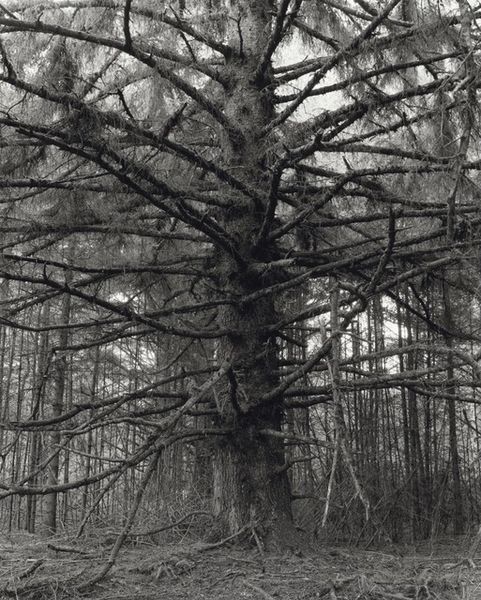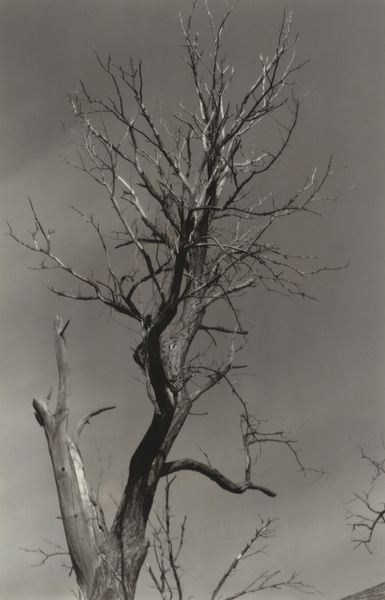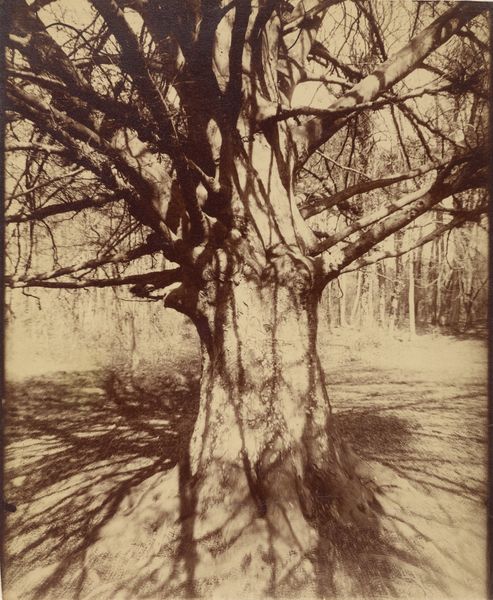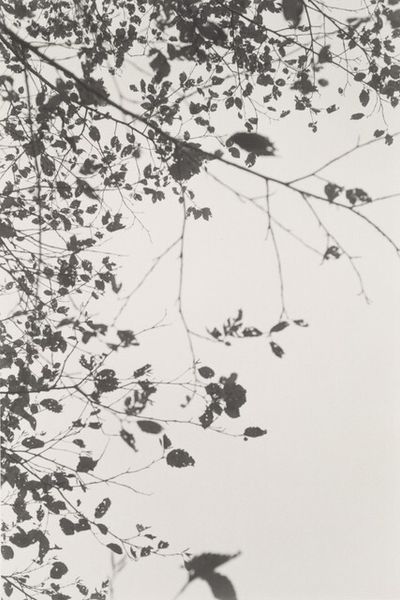
Dimensions: image: 19.2 x 18.1 cm (7 9/16 x 7 1/8 in.) sheet: 24.1 x 18.3 cm (9 1/2 x 7 3/16 in.)
Copyright: National Gallery of Art: CC0 1.0
Editor: Robert Frank's gelatin silver print, "Snow-covered tree--Landscape," made sometime between 1941 and 1945, has such a stark, almost haunting quality. What do you see in this piece beyond the literal depiction of winter? Curator: I see a complex interplay of power and vulnerability. Think about the historical context: this was created during wartime. The seemingly simple image of a snow-laden tree can be read as a metaphor for resilience in the face of adversity. The starkness speaks to loss, but the branches, reaching upwards, hint at survival. How does the use of monochrome influence your perception of this contrast? Editor: It definitely amplifies that sense of austerity. Without color, the shapes and textures really stand out, emphasizing the weight of the snow and the skeletal structure of the branches. Curator: Exactly. And that weight isn't just physical. Consider how Frank, a Jewish artist, may have felt during this period. Could the oppressive weight of snow symbolize the social and political burdens he and others carried? The "naturalism" tag points to a larger concept: How nature can be both indifferent and a reflection of human struggle? Editor: That’s a really powerful point. I hadn’t thought about reading the "nature" in relation to his identity and experience of the time. Curator: It invites us to consider nature not as a passive backdrop but as an active participant in the narrative of human existence. The form of the tree becomes a symbol of enduring strength and resilience, mirroring the capacity for resistance within marginalized communities. What new insights do you gain looking at the image from that perspective? Editor: Now it feels like more than just a landscape. I see layers of meaning, a visual poem about perseverance during hardship, making me think differently about art and its connection to our own narratives. Curator: Precisely. It's a reminder that art often reflects not only what we see, but also the lived experiences and struggles that shape our perspectives.
Comments
No comments
Be the first to comment and join the conversation on the ultimate creative platform.
